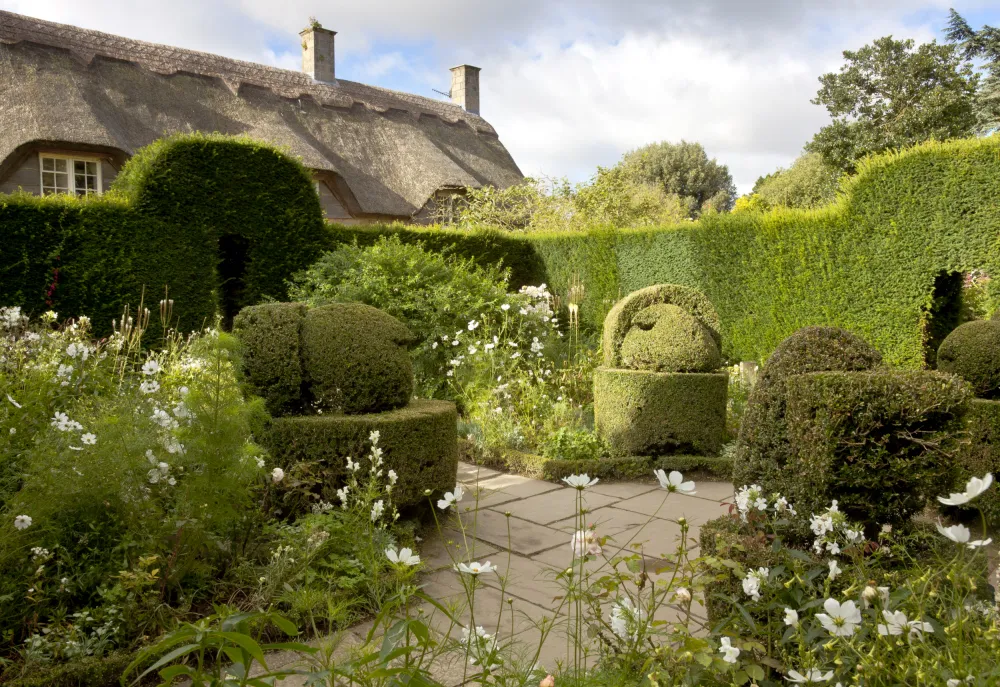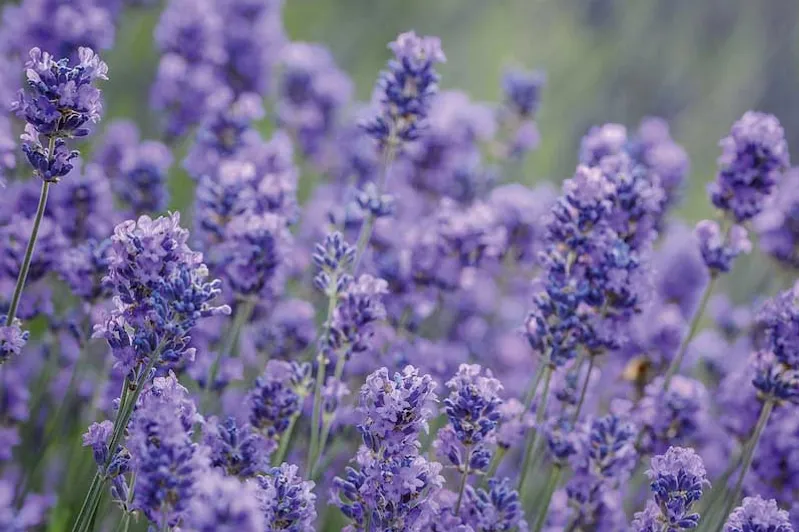The fundamental difference between interior design and garden design is that outdoors we have to deal not just with three dimensions but with the fourth dimension of time. Indoors you may need to accept a certain amount of wear and tear on your carpets and furnishings, but essentially nothing really changes from day to day, or even year to year. Things don’t change shape. They don’t grow, and nothing is ravaged by the weather.
You may also like
One advantage we do have in garden design is that change is slow paced. Tellingly, one of the most visited gardens in the UK is Hidcote in Gloucestershire – an Arts and Crafts garden created more than 100 years ago. There is natural stone and brick paving, some clipped hedges and rows of trees. And everyone loves it. Natural materials don’t date.
Succession planting is one of the best approaches to working with time and change.
The look of a garden can change by the hour as the sun moves around the garden, not just in the shadows it creates but in the flowers that open. When the sun falls on a Mesembryanthemum or a Californian poppy, for example, the flowers will oblige by opening and then close again at dusk. One week to the next is different as ephemeral flowers come and go. A bearded iris lasts only two weeks. Then there are seasonal changes. The challenge here is maintaining a long period of interest perhaps by having flowers or leaves or seedheads at different time of year. Succession planting is one of the best approaches to working with time and change. Structural shrubs in a border can be underplanted, interplanted with bulbs and self-seeders and as one perennial fades a neighbouring one flourishes to fill the gap. It means that something is always going on.
You can also use time to transform the colour theme or look of a garden or border from one month to the next, starting with a riot of spring bulbs, moving through all the colours of the rainbow, and ending up with a white garden in midsummer – and all in one place. The best way to plan such an outcome is by making a spreadsheet with the months of the year, the names of the plants and putting the relevant colour in the relevant box.
Some aspects of maturity and ageing can be good, some less so.
The passage of time over years is more challenging. Some aspects of maturity and ageing can be good, some less so. On the whole gardens improve as they mature as long as they are looked after. Trees and shrubs become increasingly majestic, they flower more, they have better branch structure and the bark becomes more textural. But while this is happening they also create more shade, using more water and drying out the ground. What you originally planted in that moist sunny spot is now drawn and struggling and needs replacing with dry shade-loving plants. Use plants that aren’t too fussy to combat this, such as nandinas, hydrangeas or aruncus, or perhaps try some of the geraniums that can happily start out in full sun and end up in some shade yet remain just as happy.
Planting density is a challenge and many gardeners end up overplanting new gardens. In perennial schemes you should plan for them to peak in three years. You get a mature-looking garden fast but in truth you will be dividing and thinning out in year five. You should theoretically leave lots of space around each plant but that would mean unsightly bare earth where weeds can colonise. Some shrubs, cistus and hebes for example, can be planted in groups rather than as individuals. You get instant maturity and over time these fast-growing plants knit together without any attention from you. Single slower growing shrubs such as rhododendrons are harder to deal with because they will ultimately spread out and their skirts will swamp and smother their neighbours. One approach is to plant perennials or annuals that are sacrificial and to accept that they are only a stop gap.
Of course perennials grow fast while the shrubs plod. This means that in year three a mixed border will be dominated by the perennials but in year ten the shrubs may rule. While this adds mass and volume and – possibly reduces maintenance – it does mean that you could lose some of the finer detail and excitement.
The challenge with time is that it passes unnoticed. Before long you will be asking yourself how on earth did that leylandii hedge get so big? Where have the alliums that you are sure you planted last year all gone? Time will play with the scale and proportion of an original design. Keep your eye on it.
Andy Sturgeon is an internationally renowned landscape and garden designer. He is the winner of eight Gold medals at the RHS Chelsea Flower Show, including Best in Show in 2019. andysturgeon.com
1
Timeless style

Modern man-made materials can rapidly date in a garden but natural stone and clipped hedges have a timeless quality that endures, ensuring that the popularity of gardens such as Lawrence Johnston’s garden at Hidcote never wanes.
2
Leading lights
When a young tree is first planted a single light may be sufficient to highlight its trunk and branch structure. But as the tree grows you will need to move it further away and add a second to maximise the drama.
3
Scent of time

A clipped structure of topiary may take years to mature so it can be worth investing in one or two larger pieces for immediate effect. Lavender and other sub-shrubs, however, give almost instant rewards.
4
Slow movement

Packing borders with grasses or perennials gives rapid results adding mass and volume. The temptation is to overplant but gaps will eventually be filled and sometimes it can be better to invest in slower-growing shrubs.
5
Patina of age
All wood will eventually turn silver grey and lose its original colour. This process happens more quickly in full sun and can be retarded with tinted oils but not prevented. It’s best to just give in to the effects of time.